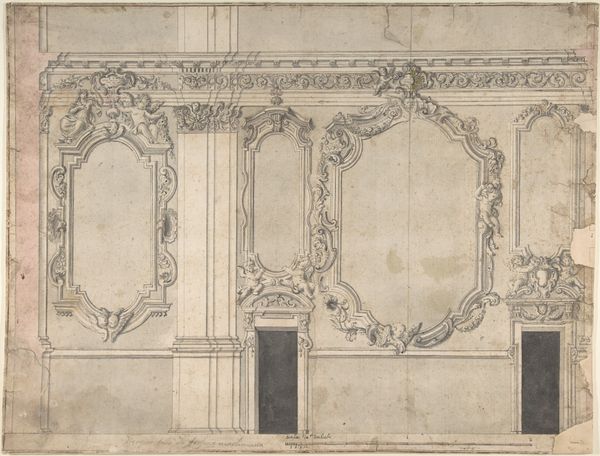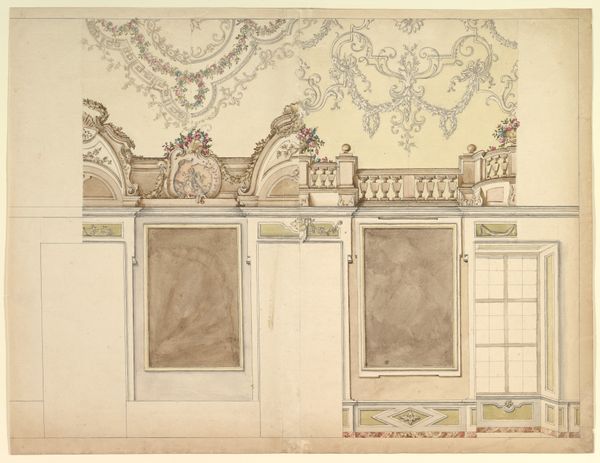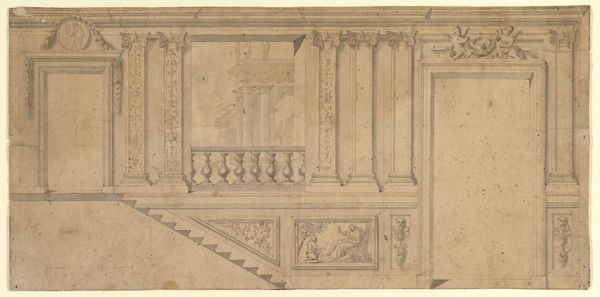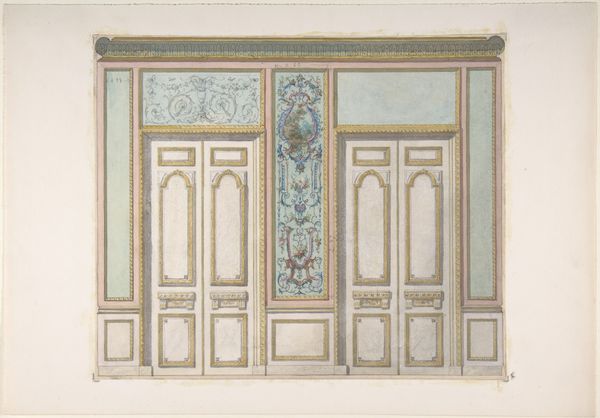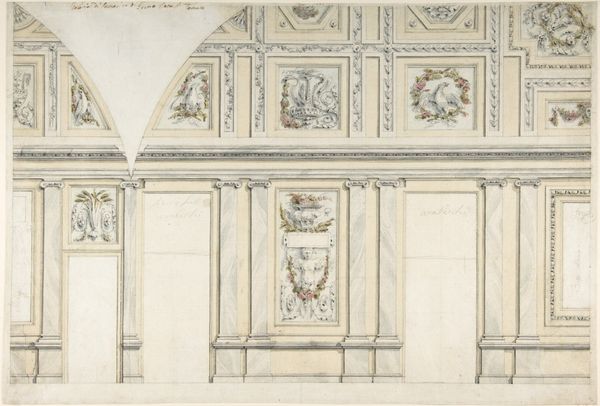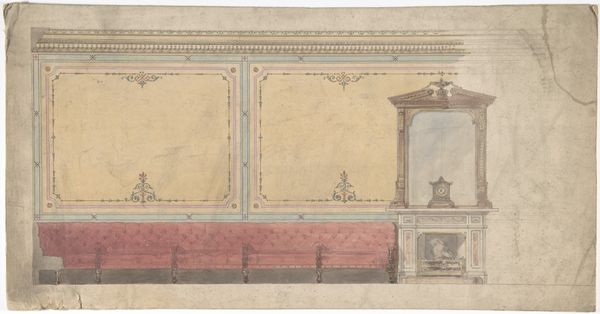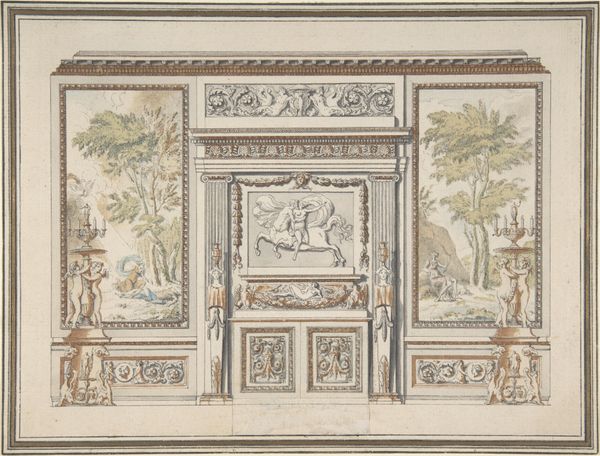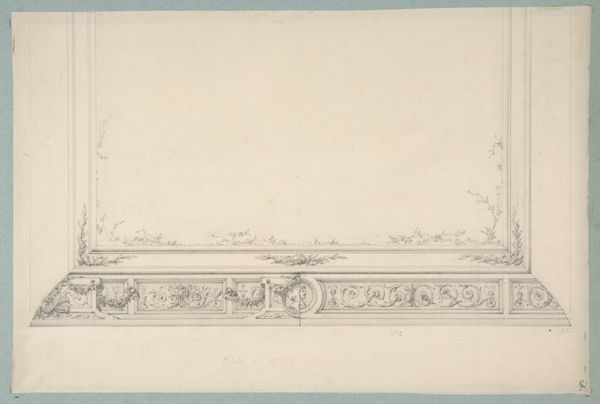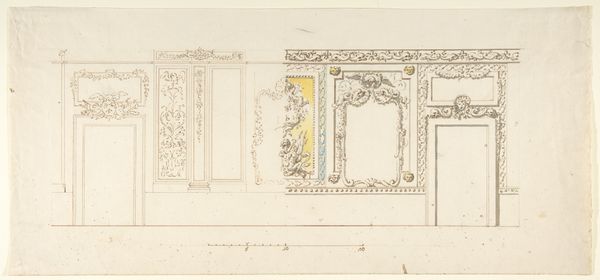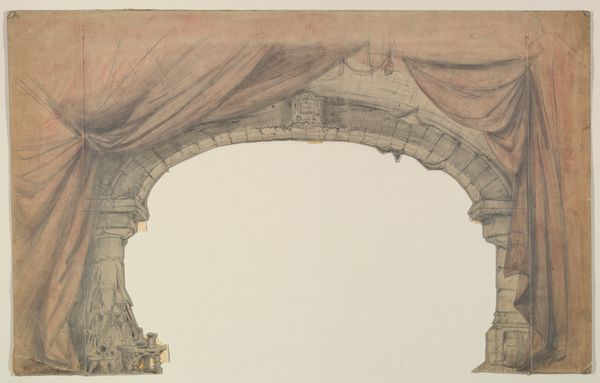
Design for Coving, Hotel de Trevise 1850 - 1910
0:00
0:00
drawing, print, watercolor, architecture
#
drawing
# print
#
watercolor
#
decorative-art
#
architecture
Dimensions: 13 3/16 x 19 3/8 in. (33.5 x 49.2 cm)
Copyright: Public Domain
Curator: Looking at "Design for Coving, Hotel de Trevise" by Jules-Edmond-Charles Lachaise, dating between 1850 and 1910 and held at The Met, I see ornate forms brimming with suggestion. What's your first take? Editor: Immediately, I notice the watercolor medium, it seems delicate for architectural planning, which usually prioritizes function over surface appeal, don’t you think? It gives the design an ephemeral, almost dreamlike quality, contrasting its intent of tangible design. Curator: Interesting! And fitting. Ornament, like that on the coving here, always reflects societal values. These twisting, golden acanthus leaves evoke classicism and luxury, which speaks to the Hotel de Trevise as a status symbol, promising a unique experience. Editor: It’s also worth noting the actual crafting here, the labor intensive element in gold embellishments! Imagine commissioning artisans with the skills to render these intricate designs, catering to an exclusive clientele. It makes one consider, where are those trades now? Curator: Indeed, there’s a deep connection with time. A luxury hotel would offer more than shelter; it offered an immersion in a set of aspirational cultural ideals, ones conveyed, of course, via this imagery. Take the putto worked into the frieze, half architectural detail, half mischievous inhabitant! Editor: And beyond status symbols, there is also utility and construction in this decorative art, from print and architectural planning to drawing with the added watercolor wash…all which lead to this specific creation. What processes and relationships does art demand of labor? Curator: Precisely. It encourages us to look past face value, beyond mere decoration. Lachaise’s design embodies ambition: projecting values through form. The iconography captures this through symbols which we understand even now. Editor: It strikes me that our divergent lenses allow for distinct interpretations, adding dimension to what could seem like a pretty surface. Each of us, approaching through symbolic resonance or material production, illuminates a fragment of a broader history.
Comments
No comments
Be the first to comment and join the conversation on the ultimate creative platform.

